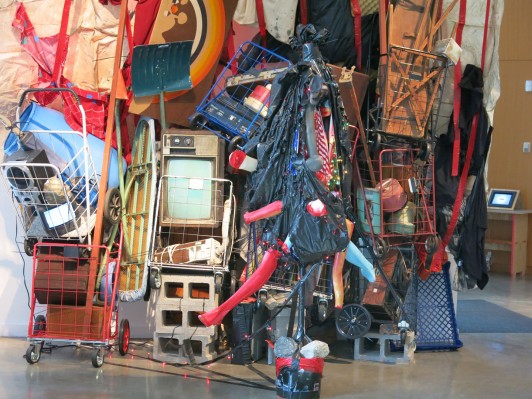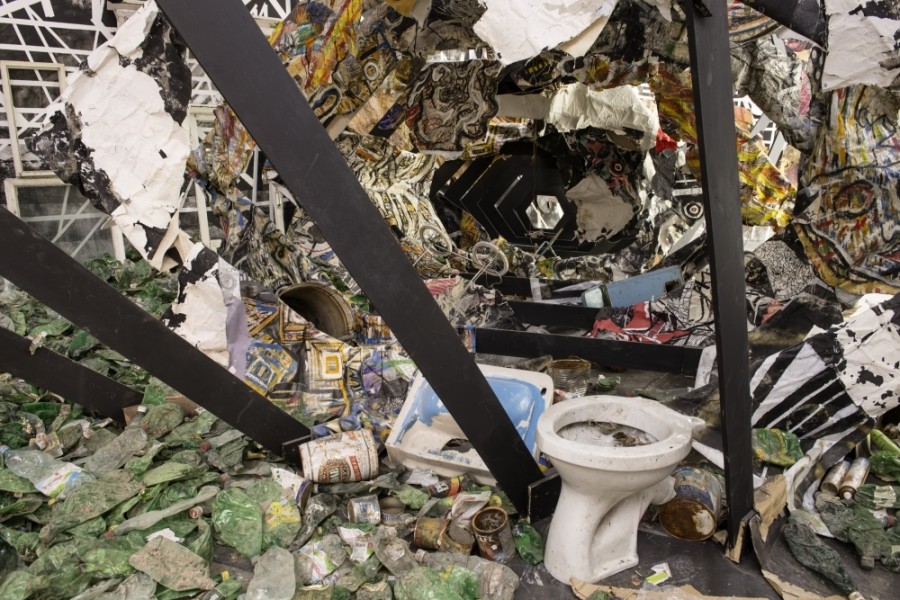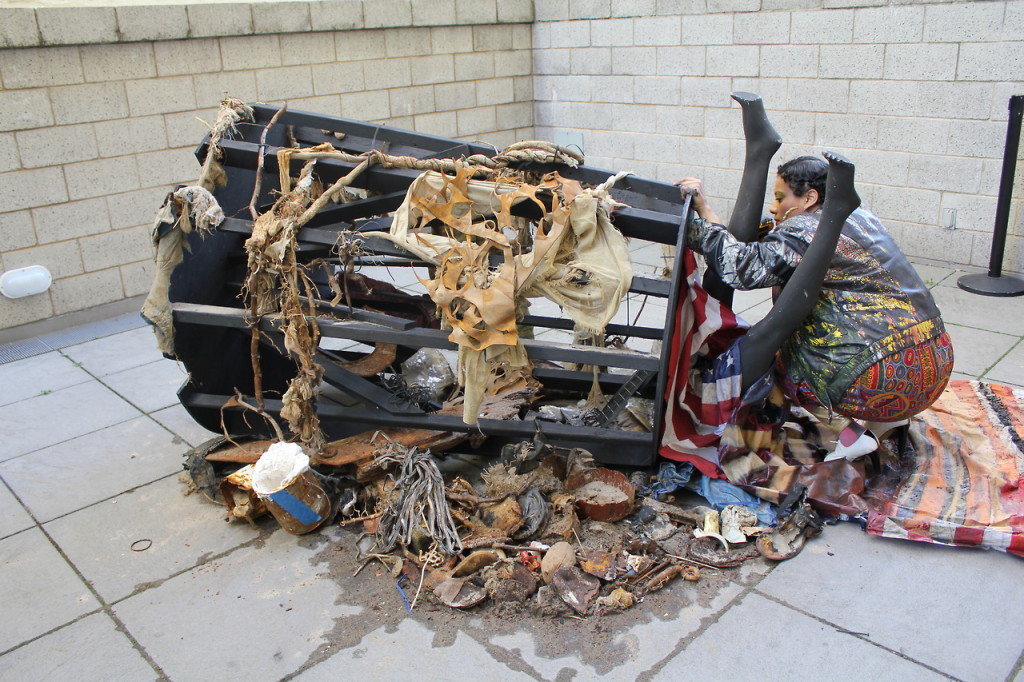
Abigail DeVille’s work imbues with cultural and historical cues. Her dark sculptural installations are steeped in destruction and decay, acting as reflections on social and cultural oppression, racial identity, and discrimination in American history.
America, Abigail DeVille, . October 22nd, 2015 – December 19th, 2015, Michel Rein Gallery Paris
About:
Abigail DeVille is concerned with narratives of displacement and marginalization, and through her sprawling installations and sculptures, she gives pronounced physical presence to “invisible people” within the privileged space of institutions. The notion of invisibility as a social condition has held much significance, particularly for black artists working after the release of Ralph Ellison’s seminal text Invisible Man in 1952. Ellison’s novel posits race, blackness in particular, as analogous to invisibility. Similarly, the writings of theorist Michele Faith Wallace, and sociologist W.E.B. Du Bois’s notion of “double consciousness”, engage the idea of erasure and conflicted identities. Abigail DeVille’s socially engaged practice speaks to Ellison’s original concept, and by extension interrogates poverty, disenfranchisement and homelessness, other means by which people and histories are marginalized and left unseen.
Bronx City, 2013.
In the gallery setting, installation creates a new space to consider what an art institution represents within a culture — a space symbolic of economic and intellectual privilege or a potential site for resistance through visual production. For DeVille, installation becomes a vehicle to move outside museum walls and discuss matters of personal significance — her own narrative and those narratives that have become casualties of circumstance.
Street Life, The Vortex, 2012.
DeVille at work.
Invisible Men Beyond the Veil, 2013.
For an exhibition at the gallery Michel Rein in 2013, Abigail DeVille realized a site specific project with new works from the ongoing series Invisible Men: Beyond the Veil that documents an American family’s history through discarded and reclaimed objects, paintings and collages.




